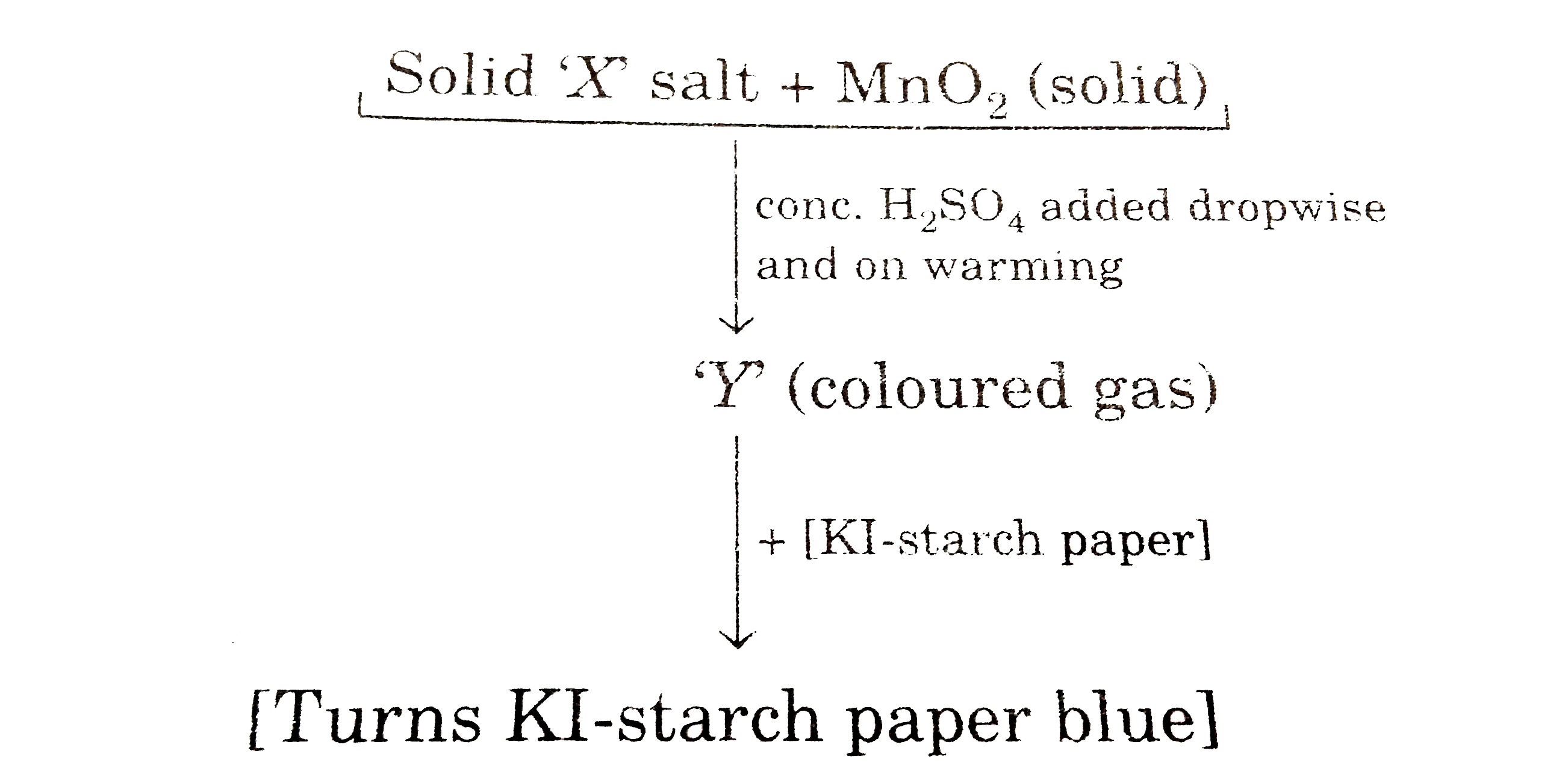A filter paper soaked in salt X turns brown when exposed to HNO3 vapour. The salt X is
KCl
KBr
Kl
K2SO4
The correct Answer is:C
2KI+4HNO3→I2+2NO2+2KNO3+2H2O
Iodide ion is a strong reducing agent and reduces HNO3 vapours to NO2 (Brown gas)
Topper's Solved these Questions
Similar Questions
What happens when a paper soaked in acidified potassium dichromate is exposed to SO2 gas ?
View SolutionA sodium salt (A) is heated with cone. Sulphuric acid. The evolved gas truns moist litmus paper red and producess white fumes in contact with a glass rod moistened with ammonia solution. It also gives white precipitate when passed through AgNO3 solution. When the salt is heated with MnO2 and cone. H2SO4, a gas with an irritating smell is evolved which turns starch-iodide paper blue. Identify the salt and the gaseous product evolved from it. Explain your answer with relevant chemical equations.
View Solution
Knowledge Check
A salt, when warmed with zinc powder and an NaOH solution, gives a gas that turns a filter paper soaked with an alkaline solution of K2[HgI4] brown. The salt responds to the brown ring test when acetic acid is used in place of sulphuric acid. The anion present in the salt is:
ANO−3BNO−2CBr−DNone of theseA piece of filter paper dipped in Pb(NO3)2 solution turns black when it is brought in the gas.
ACl2BH2SCSO2DN2A piece of filter paper dipped in Pb(NO3)2 solution turns black when it is brought in the gas
ACl2BH2SCSO2DN2
A teacherr gave a student two salts (A) and (B) told him to identiify these salts. The student heated salt (A) strongly and observed two oxides to sulphur. He added NaOH solution to aqueous solution of (A) and observed a green precipitate, which turned brown on exposure to air.
When he tok salt (B) to flame test, green colour was observed. On heating salt (B) with a solid compound (X) and concentrated sulphuric acid, orange red vapours are evolved. when this gas is passed through an aqueous solution of a base, the solution turns yellow.
Q. Compound (X) is:
View SolutionA teacherr gave a student two salts (A) and (B) told him to identiify these salts. The student heated salt (A) strongly and observed two oxides to sulphur. He added NaOH solution to aqueous solution of (A) and observed a green precipitate, which turned brown on exposure to air.
When he tok salt (B) to flame test, green colour was observed. On heating salt (B) with a solid compound (X) and concentrated sulphuric acid, orange red vapours are evolved. when this gas is passed through an aqueous solution of a base, the solution turns yellow.
Q. Salt (B) suggest that the cation and anion in it are respectively:
View SolutionA teacherr gave a student two salts (A) and (B) told him to identiify these salts. The student heated salt (A) strongly and observed two oxides to sulphur. He added NaOH solution to aqueous solution of (A) and observed a green precipitate, which turned brown on exposure to air.
When he tok salt (B) to flame test, green colour was observed. On heating salt (B) with a solid compound (X) and concentrated sulphuric acid, orange red vapours are evolved. when this gas is passed through an aqueous solution of a base, the solution turns yellow.
Q. The salt (A) can be:
View SolutionAn inorganic compound A is dissolved in dilute hydrochloric acid and is then warmed. A colourless gas B is produced. When a filter paper moistened with potassium iodate and the strach solution is exposed to the gas it turns blue. The gas B and the compound A are:
View Solution
Here salt 'X' may be:
View Solution
